On February 6, 1854, the State of Texas allocated two parcels of land for two Indian reservations in Young and Throckmorton Counties., to be overseen by the United States Indian agent for Texas.
The 40,000-acre Brazos Reserve, just below present-day Graham, was home to Caddo, Waco, Anadarko, and Tonkawa tribes. On the Clear Fork of the Brazos in Throckmorton County, Penateka Comanches lived on the 18,576-acre Comanche Reserve. The federal Indian agent in charge of both reservations was Major Robert Simpson Neighbors.
These reserves represented the peak of Native American assimilation efforts in Texas. Neighbors felt that if his charges learned how to farm, acquired more education, and adopted Anglo life ways, they would successfully blend into the white man’s world.(1)
Not all federal employees shared Robert Neighbor’s progressive enthusiasm for Indian reservations. On September 5, 1857, a government wagon train en route to improve the El Paso-Ft. Yuma Road stopped at the crossing on the Clear Fork. Writing in the expedition’s journal, a member of the party expressed distaste for the government’s policy regarding Native Americans in North Texas. He noted that, “Near the point at which we crossed the Clear Fork of the Brazos stand the buildings of one of the Comanche Indian Agencies . . . But little reliance is to be placed in the good faith of these savages. Certainly a more villainous and treacherous looking set than most of them have not often been seen.”(2)
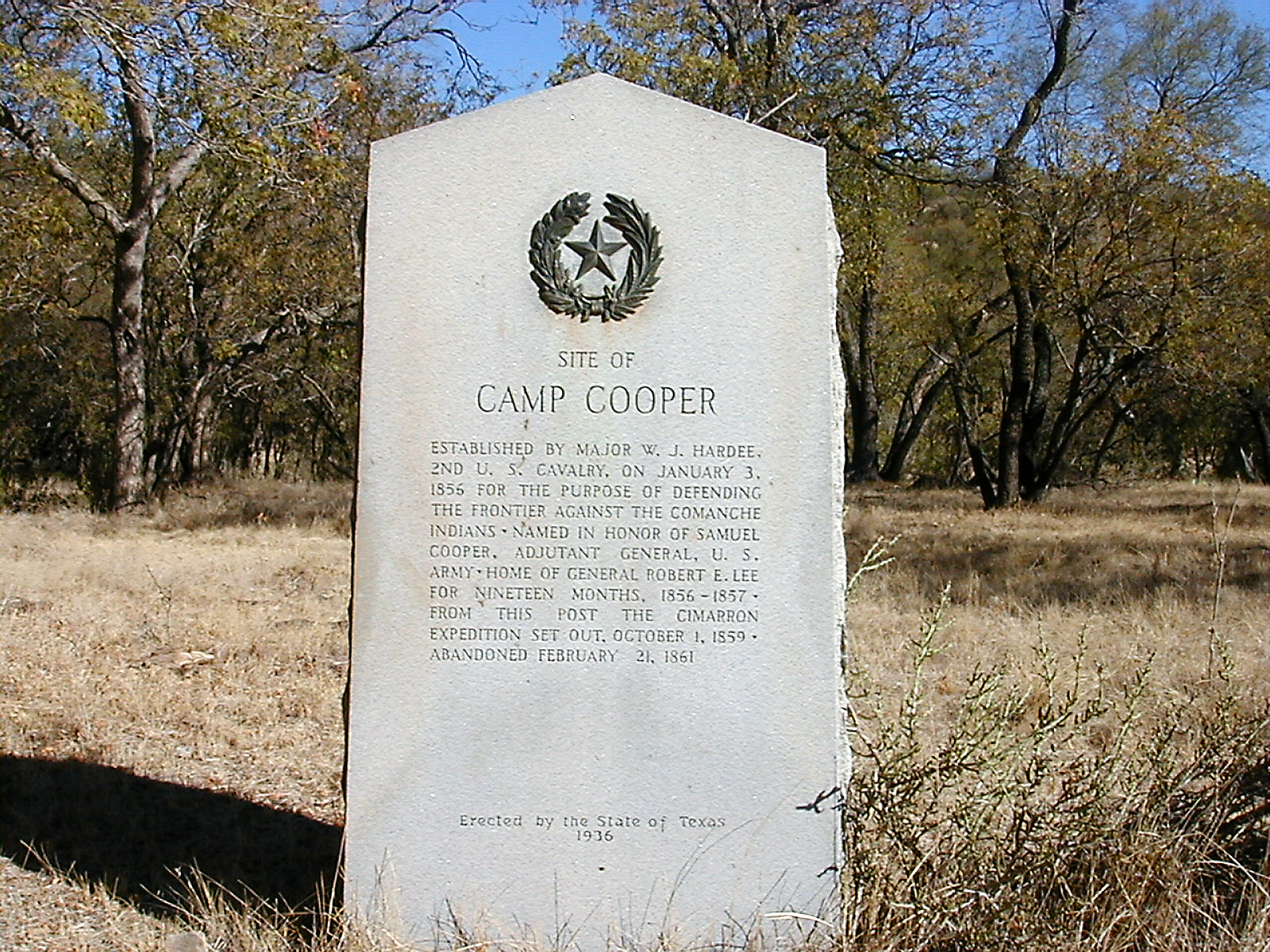
The U.S. Army established CAMP COOPER in 1856 to keep watch over and protect the adjacent Comanche Indian Reservation.
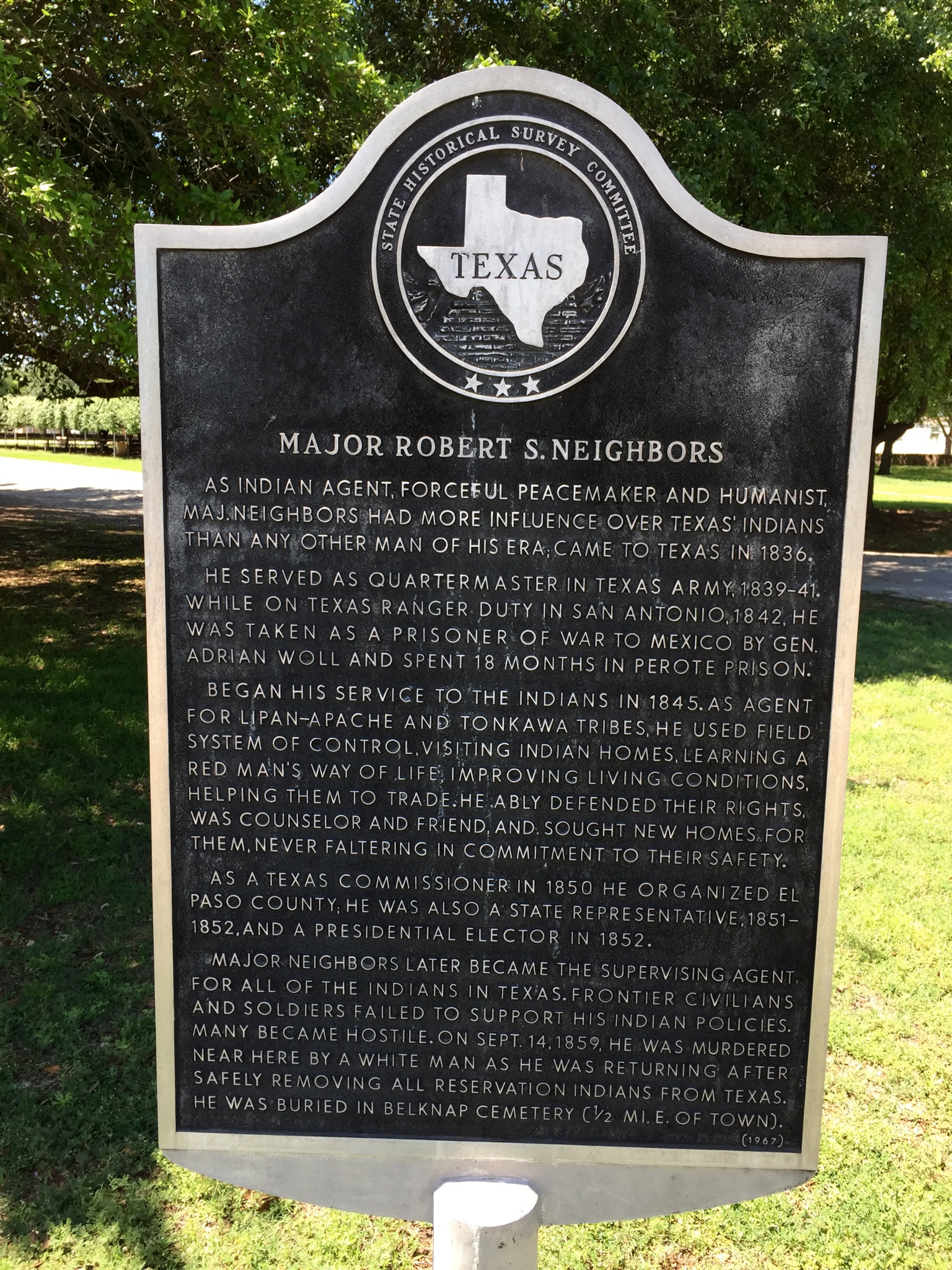
Major Robert Simpson Neighbors
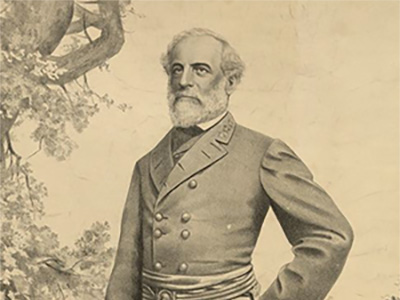
LT. COL. ROBERT E. LEE commanded Camp Cooper from April 1856 until July 1857. Rattlesnakes were common along the Clear Fork and Lt. Col. Lee had one for a pet at the camp.
Native American attempts to integrate into antebellum Anglo frontier society ended in failure. The North Texas Indian reservations never had the time necessary to succeed. The Indians complained that the size of the reservations was too small to support their numbers and that federal supplies and protection from Anglo rustlers, vigilantes, and raiding marauders were grossly inadequate. A number of Anglo settlers in the region, unaccustomed to having Native Americans living nearby, cared little about these assimilation efforts and refused to extend a helping hand to the Indians.
These whites lumped the peaceful reservation tribes in with marauding, non-reserve Comanches, who raided south into Texas from Indian Territory north of the Red River. Indifferent in their depredations, these raiding Comanches struck both the reservations and Anglo settlements. When non-reserve Comanches stole livestock and killed settlers, the reservation Indians received the blame. In fact, a number of reserve Indians refused to stay on the reservation and did commit crimes against whites in the region.
From an Anglo pioneer’s perspective with little understanding of Indian society, the confusing frontier maelstrom of both peaceful and raiding Native Americans, inter-tribal conflict, combined with the loss of livestock and loved ones made it hard for them to accept the reservations. Despite these Anglo perceptions, the bulk of the primary evidence shows that the majority of Brazos and Comanche reserve Indians made a concerted effort to adapt to mainstream American society. In fact, the reservation Indians repeatedly volunteered as scouts and actively participated in the Army’s retaliatory expeditions against the raiding Comanches.
A group of several hundred whites from neighboring counties, insensitive to these various tribal distinctions, regarded all Indians as being the same. These Anglos, entrenched in their attitudes towards Native Americans, found it easier to hate all Indians rather than attempt to change their perceptions and accept some of them as neighbors. The lawless, violent, and unsettled condition of the Texas frontier was also not the best-suited laboratory in which to conduct these reservation experiments, to try and change long-held cultural and racial attitudes. Raids by non-reserve Comanches and Kiowas, combined with depredations by outlaw Anglo vigilantes, kept the region in a state of constant flux, and all of its residents wary and on edge. In addition, the federal government and the state of Texas, with their indifferent and half-hearted support, never committed the time, manpower, and resources necessary for these reservations to take root and flourish. Another mitigating factor in relations between whites and Indians was that many of the Anglos coveted the prime riverfront and timbered acreage contained within these two reserves. Determined to make the reservations fail, a group of white vigilantes in surrounding counties committed numerous depredations against innocent Native Americans. Anglo murderers who waylaid peaceful reservation Indians went unpunished by federal and Texas authorities. One such killer was former Young County sheriff and Butterfield Overland Mail employee Patrick Murphy, who admitted shooting at least two reservation Indians, and may have killed more.(3)
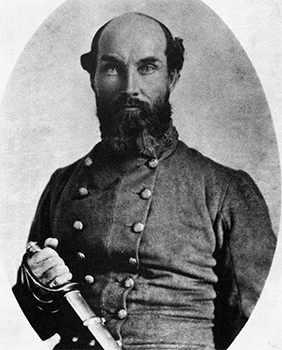
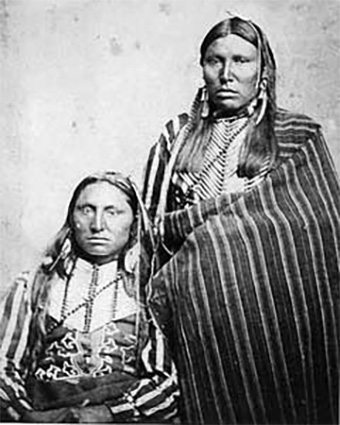
A group of several hundred whites from neighboring counties, insensitive to these various tribal distinctions, regarded all Indians as being the same. These Anglos, entrenched in their attitudes towards Native Americans, found it easier to hate all Indians rather than attempt to change their perceptions and accept some of them as neighbors. The lawless, violent, and unsettled condition of the Texas frontier was also not the best-suited laboratory in which to conduct these reservation experiments, to try and change long-held cultural and racial attitudes. Raids by non-reserve Comanches and Kiowas, combined with depredations by outlaw Anglo vigilantes, kept the region in a state of constant flux, and all of its residents wary and on edge. In addition, the federal government and the state of Texas, with their indifferent and half-hearted support, never committed the time, manpower, and resources necessary for these reservations to take root and flourish. Another mitigating factor in relations between whites and Indians was that many of the Anglos coveted the prime riverfront and timbered acreage contained within these two reserves. Determined to make the reservations fail, a group of white vigilantes in surrounding counties committed numerous depredations against innocent Native Americans. Anglo murderers who waylaid peaceful reservation Indians went unpunished by federal and Texas authorities. One such killer was former Young County sheriff and Butterfield Overland Mail employee Patrick Murphy, who admitted shooting at least two reservation Indians, and may have killed more.(3)
While the federal government had charge of the reservations, the State of Texas retained legal jurisdiction over neighboring Anglo residents and steadfastly refused to prosecute wrongdoers. Texas lawmakers, never fond of Indians, resented the two reservations from their inception and desired to see them fail. A number of racist and violence-prone Anglos in the region, led by the incendiary former Indian agent John Robert Baylor, favored either Indian extermination or removal and opposed all assimilation efforts.
While serving as Indian agent at the Comanche Reserve on the Clear Fork beginning in September 1855, Baylor became convinced that some of the reservation Indians were committing depredations in neighboring counties and then returning to the safety of the reservation. Baylor found himself out of work by May 1857. Fired for misuse of federal funds, and having lost the confidence of the reserve Indians, he blamed the federal superintendent of the reservations, Robert S. Neighbors, for his termination. For the next two years, from 1858-1859, Baylor and his group created serious problems for Neighbors. Baylor constantly incited local settlers, including Butterfield Overland Mail employees Edward Cornett and the Murphys, to turn against Neighbors and the reservation Indians. Baylor, along with H.A. Hamner and Isaac Worrall, kept the flames of fear fanned and Anglo anxiety at fever pitch along the frontier through reports and editorials in their aptly titled publication, the White Man. Advocating a policy of Indian extermination, this vitriolic newspaper railed in its commentary against Neighbors and Governor Sam Houston, and their more enlightened Indian policies.
There is strong factual evidence that a gang of whites deliberately committed depredations along the frontier during 1858-1859 in hopes of assigning blame on the reservation Indians. These lawless acts included livestock theft, arson, murder, and kidnapping. Jack County historian Ida Lasater Huckabay says that “citizens knew that white men preyed on their stock and that too often blame was laid to the Indians on the reservation . . . . Many people who lived near the reservation were sympathetic to the Indians.” Replying to a frontier petition asking for help with Indian depredations, Houston in August 1860 wrote, “The people of the frontier should keep a strict watch upon all suspicious characters as the Executive cannot protect them from white Indians.”(4)
At daybreak on December 26, 1858, twenty Anglos led by Peter Garland, a secondary leader in Baylor’s group, attacked a sleeping, innocent band of Brazos Reserve Indians and their leader Choctaw Tom on Ioni Creek, killing seven, including three women, and wounding six. Noted Texas rancher Charles Goodnight, an occasional member of the Baylor gang, judged the massacre as a ‘“dirty piece of business. They just wanted to be killing some Indians.”’ Despite a number of murder indictments issued by judicial authorities, Texas Ranger Captain John “Rip” Ford refused to round up Garland and his gang, fearing that any arrests would ignite a civil war. President Andrew Jackson and the federal army used exactly the same excuse during the 1830s when they declined to protect members of the Five Civilized Tribes from violent and lawless Anglo attacks in Georgia. Throughout the nineteenth century, the application of justice was uneven for all residents of the United States. In both Georgia and Texas, keeping the peace among whites superseded federal and local enforcement of laws regulating murder, property theft, and other depredations against American Indians.(5)
Garland’s attack and the subsequent reluctance of federal and state officials to prosecute him sent a clear message to Texas Indians trying to assimilate that the reservations were a waste of time and that their welfare ultimately was of no concern to whites. It was after the Choctaw Tom massacre that Indian-Anglo relations and the fortunes of the Brazos and Comanche reserves took a marked turn for the worse. By late February 1859, the Secretary of the Interior was considering moving the two reserves north to Indian Territory. Within a few months, escalating depredations and agitation by both whites and Native Americans sealed the fate of the North Texas reserves.(6)
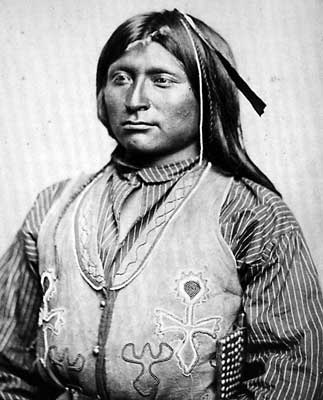
On May 23, 1859, Baylor and 250 men (including Charles Goodnight) attacked the Brazos Reservation, south of present-day Graham, killing five, including two elderly Indians. Residents of Belknap told Neighbors that Baylor’s attacking party included some unsavory types, specifically, “fifty horse thieves and well-known desperados.” The Indian superintendent said these outlaws were “stealing horses from the reserves, and from the citizens around it, waylaying roads, stopping travelers, robbing wagons, and stopping the mails.”
Here on the western frontier, lawless elements operated with near-impunity. The federal army, responsible for protecting the reservations Indians, was interminably slow and inadequate in its response. Texas Governor Hardin Richard Runnels refused to help, claiming the matter was the jurisdiction of the U.S. Eighth Military District. Texas Ranger Captain John “Rip” Ford protested in a letter to President James Buchanan’s Indian commissioner that “I have never been able to detect the Reserve Indians in the commission of a single depredation . . . and I do think the measures instituted by the people [Baylor and his group] have been impolitic and precipitate.”
Neighbors, unable to adequately protect his charges and wanting to avoid their mass slaughter at the hands of whites, hurriedly relocated all of the reservation Indians. In August 1859, protected by an army escort under Major George Thomas, Neighbors personally led his charges to safety across the Red River into Indian Territory. Reflecting upon the numerous violent and lawless events over the previous nine months, he said, ‘“I have this day crossed all the Indians out of the heathen land of ‘Texas’ and am now ‘out of the land of the philistines.”’(7)
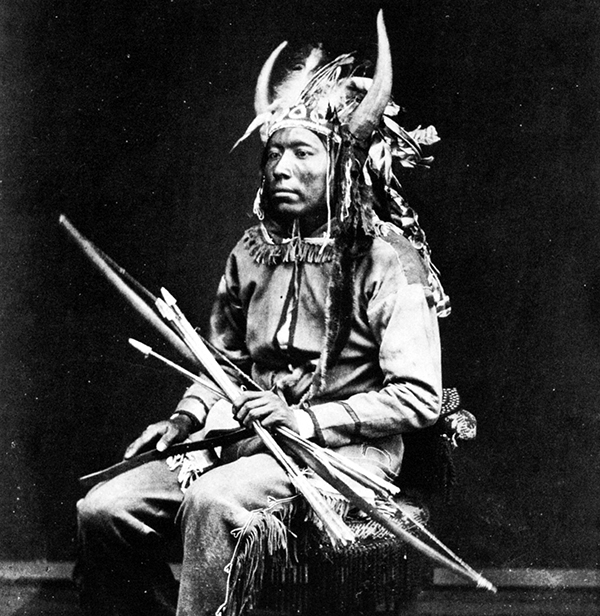
Greatly relieved to see the Indians safe and unaware that his life was in danger, Neighbors returned to the Lone Star State to rejoin his family in San Antonio. Deep in the Cross Timbers, members of the white vigilante group, including Baylor, former sheriff Patrick Murphy, and Murphy’s brother-in-law Edward Cornett, nursed a serious grudge against Neighbors and plotted to kill him. A Waco newspaper reporter noted in May 1859 that Baylor publicly threatened to hang Neighbors. Butterfield employee Murphy also had concerns that Neighbors might prosecute him for the murders of several reservation Indians, including the slaying of the Crow Indian Fox in May 1859. An army report from September 1859 noted that locals heard Neighbors freely discussing the Fox case in and around Belknap. At eleven in the morning on September 14, 1859, at the county seat of Belknap (half-mile east of the fort), Patrick Murphy, with pistol in hand, confronted Neighbors in the street. Also with Neighbors was a speculator named A.J. MacKay. Murphy said, “Neighbors I understand that you have said I am a horsethief. Is it so?” Before Neighbors could respond, Cornett came up from behind and fired a shotgun blast into the Indian agent’s back. Newspaper accounts of the murder also place a man named Williams in the company of Murphy and Cornett.(8)
In a letter to his father David G. Burnet, Lt. William Burnet wrote, “The ‘Baylor Party’ have murdered Major Neighbors . . . the assassination . . . was a most foul and cowardly murder.” A Young County Grand Jury in November 1859 indicted Baylor as an accomplice in Neighbor’s killing. A grand jury in May of the following year indicted Edward Cornett for pulling the trigger.
Ironically, county commissioners previously selected Cornett to serve on the Young County grand jury for its 1858 term. In an October 1859 newspaper account of the Belknap shooting, correspondent J.M. Smith commented that, “Murphy is thought to be clever. Cornet [sic] shot a man two years ago, and is a drinking, blustering, and boasting desperado-both Englishmen-keeps stand on Overland mail route between Belknap and Jacksboro. I myself know the men and fear the report is too true.”(9)
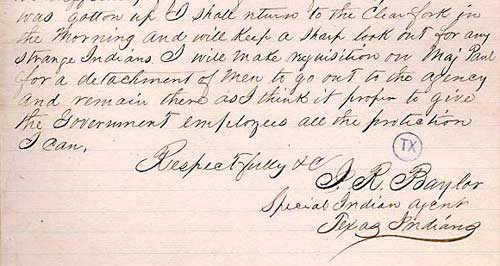
Neighbors’s murder removed the last vestige of stability on the antebellum Texas frontier. The brutal conduct by John R. Baylor and members of his vigilante group concerning the two reserves sparked aggressive Native American reprisals, sending the cycle of violence spinning out of control, and leading to a complete breakdown of Indian-white relations. Baylor’s son, Walker, regretted the murder of his father’s nemesis, opining that, “ the killing of Major Neighbors was about the greatest misfortune that could have befallen our northern frontier. I think he could have, by his influence over the Indians, prevented largely the horrible murders of men, women and children . . . for many years after his untimely death.”(10)
From Young to Throckmorton Counties, the story of the 1854-1859 Indian reservations reveals a violent, racist, and unsettled Texas frontier. John R. Baylor, H.A. Hamner, Peter Garland, and Patrick Murphy ultimately won the contest for this section, but in some respects, it was an empty victory. The legacy of the failed Indian reserves continued to haunt the region. The cycle of frontier violence and retaliation soon spiraled out of control. The actions of the Baylor gang and some Texas settlers sparked Indians north of the Red River to increase their raids upon the Lone Star State.
Watch a sample video clip from our documentary
The Settlement Of Texas, Part One: The Native Americans
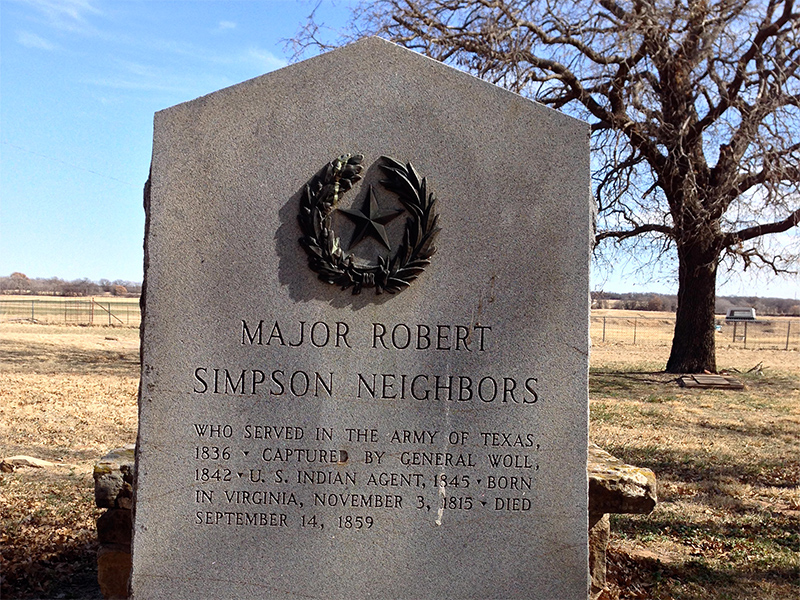
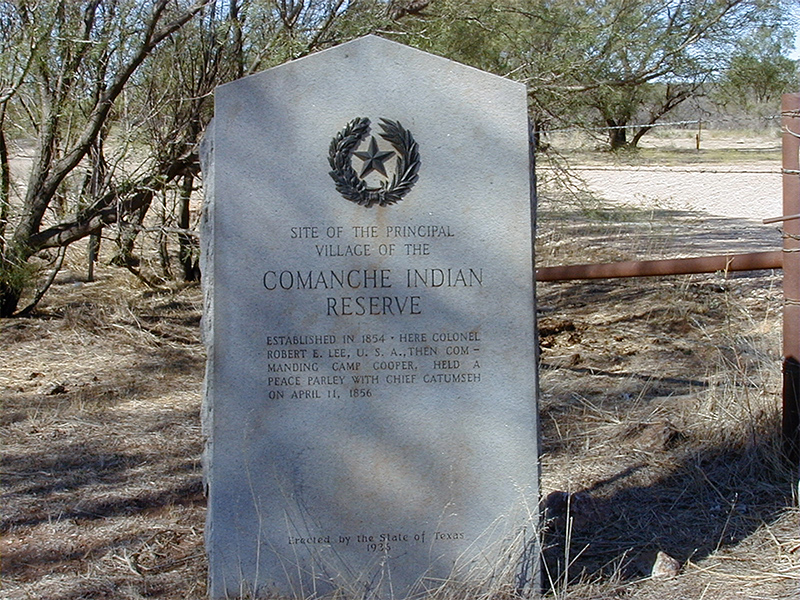
John R. Baylor represented a significant element of Anglo frontier sentiment. To these white settlers, the Indians had no place in Texas. The frontiersmen wanted the tribes removed or exterminated. Baylor eventually ran into serious problems. In November 1862, Confederate Secretary of War G.W. Randolph relieved him of his command in Arizona for issuing an order to exterminate Apache Indians. Writing in his defense, Baylor spoke of his “unsparing hatred of a relentless, merciless, and treacherous foe, and a natural desire to see them utterly driven from the face of the earth.” Baylor, “a firm believer in the civilizing effects of slavery as regards to the African race,” felt the Indians too wild to successfully enslave. Like many other Texans, the former reservation agent proved incapable of making distinctions between peaceful and warlike tribes. Such distinctions made frontier relations too complicated. For their part, many of the Comanches, Kiowas, and Apaches had no desire to walk the white man’s path. These tribes matched the frontiersmen, blow for blow, in the brutal and bloody struggle for control of the region.(11)
The federal and state governments put in a notably abysmal performance in their handling of Texas’s reservations. While some Indian reserves in other western states have a shared, tragic legacy, Texas’s case is notable for its complete and utter failure. Today, almost none of the Lone Star State’s original tribes live within its borders. The Karankawas are extinct, and the Cherokees, Caddos, Comanches, Kiowas, and Apaches all live outside the state. In the last century the remaining tribes, the Tiguas and Alabama-Coushattas, persevered in numerous legal disputes with Texas over their tribal lands and reservation status. Texas has a failed legacy of relations with native peoples that it has yet to come to terms with.(12)
Footnotes
- Carrie J. Crouch. “Brazos Indian Reservation,” (TSHA), http://www.tsha.utexas.edu/ handbook/online/ articles/view/BB/bpb3.html (accessed July 29, 2004); W.E.S. Dickerson. “Comanche Indian Reservation,” (TSHA), http://www.tsha.utexas.edu/ handbook/online/articles/view/ CC/bpc10.html (accessed July 29, 2004).
- J.W. Williams, Old Texas Trails, ed. Kenneth F. Neighbours (Austin: Eakin Press, 1979), 327 (quotation).
- Dorman H. Winfrey and James M. Day, ed., The Indian Papers of Texas and the Southwest, 1825-1916, Volume V (Austin: Texas State Historical Association, 1995), 374; Kenneth Franklin Neighbours, Robert Simpson Neighbors and the Texas Frontier, 1836-1859 (Waco: Texian Press, 1975), 238, 271, 288.
- Ida Lasater Huckabay, Ninety-Four Years in Jack County: 1854-1948 (Waco: Texian Press, 1979), 51 (quotation 1); Amelia W. Williams & Eugene C. Barker, The Writings of Sam Houston: VolumeVIII, April, 1825—July, 1863 (Austin: University of Texas Press, 1943), 116 (quotation 2).
- Kenneth Franklin Neighbours, Robert Simpson Neighbors and the Texas Frontier, 1836-1859(Waco: Texian Press, 1975), 224-228, 234-235; J. Evetts Haley, Charles Goodnight: Cowman and Plainsman (Norman: University of Oklahoma Press, 1989), 26 (quotation); Barbara A. Neal Ledbetter, Fort Belknap: Frontier Saga (Newcastle: Lavender Books, 1982), 78.
- Dorman H. Winfrey and James M. Day, ed., The Indian Papers of Texas and the Southwest, 1825-1916, Volume V (Austin: Texas State Historical Association, 1995), 337-338.
- Kenneth Franklin Neighbours, Robert Simpson Neighbors and the Texas Frontier, 1836-1859(Waco: Texian Press, 1975), 235-246 (quotation one on 246, quotation two on 235), 271-272; Kenneth Franklin Neighbours, “Indian Exodus Out of Texas,” West Texas Historical Association Yearbook, Vol. 36 (October 1960): 80 (quotation three).
- Article from Seguin, Texas Union Democrat, Oct. 8, 1859, Box 39, KFN; Kenneth Franklin Neighbours, Robert Simpson Neighbors and the Texas Frontier, 1836-1859 (Waco: Texian Press, 1975), 283-291(quotation on 283); Barbara A. Neal Ledbetter, Fort Belknap Frontier Saga(Newcastle: Lavender Books, 1990), 83, 91-92.
- William Burnet to David Burnett letter, Oct. 29, 1959, KFN (quotation one); J.M. Smith report in Seguin, Texas Union Democrat, Oct. 8, 1859, KFN (quotation two).
- Rupert Norval Richardson, The Frontier of Northwest Texas, 1846-1876 (Glendale: Arthur H. Clark Company, 1963), 205; J. Marvin, Hunter, ed. The Bloody Trail in Texas: Sketches and Narratives of Indian Raids and Atrocities on Our Frontier (Bandera, Texas: Self-published, 1931), 57 (quotation).
- G.W. Randolph to J.B. Magruder, November 7, 1862 & John R. Baylor to J.B. Magruder, Dec. 29, 1862, OR, Series 1, Vol. 15, 914-918 (quotation one on 915, quotation two on 917).
- The Tigua Indians moved to El Paso in 1680 after the Pueblo Revolt in New Mexico. The Alabama-Coushatta tribe came to East Texas beginning in the 1780s.
